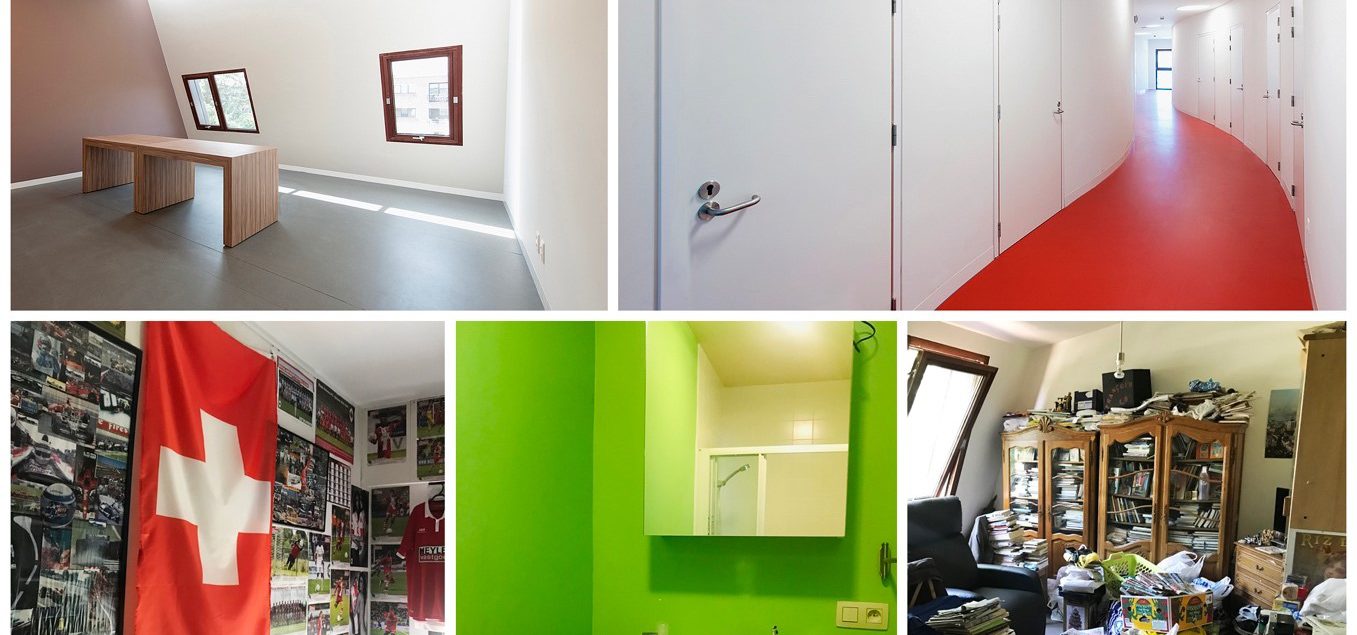Phuong Lan Nguyen defends PhD “Home Tailoring. The Built Environment in Experiences of Independent Living on the Spectrum”
| Research[x]Designer Phuong Lan Nguyen is delighted to invite you to her public PhD defence On Friday 13 May 2022 at 9:00 AM CET in Aula van de Tweede Hoofdwet in the Thermotechnisch Instituut, Kasteelpark Arenberg 41, 3001 Heverlee, Belgium. The presentation will be in English. After the defence, you are invited to the reception in the Machinezaal at the Thermotechnisch Instituut The defence will be streamed live through zoom. To access the streaming you may click on this link on the date of the event (passcode: 9jB0B6). Please confirm your attendance before the 6th May via this link and indicate if you will join online or on campus. You can park at parking Arenberg – De Molen (code: 1285#; to use when entering as well as when leaving the parking; don’t forget the #) Or get off at bus stop Heverlee Kasteel Arenberg. — Examination Committee Prof. dr. ir. arch. Ann Heylighen (Supervisor), KU Leuven, Dept. of Architecture Prof. dr. arch. Viviana d’Auria (Co-supervisor), KU Leuven, Dept of Architecture Prof. dr. ir. Jean Berlamont (Chair), KU Leuven, Dept of Civil Engineering Arch. Henk De Smet, De Smet Vermeulen architecten Prof. dr. arch. Daniel Friedman, University of Hawai’i at Mãnoa, School of Architecture, USA Prof. ir. arch. Guido Geenen, KU Leuven, Dept of Architecture & WIT architecten Prof. dr. Ilse Noens, KU Leuven, Parenting and Special Education Prof. dr. arch. Ceridwen Owen, University of Tasmania, Architecture and Design, Australia |
Abstract | Adults on the autism spectrum often continue living with their parents. Studies show that many of them, regardless of their abilities, are behind their peers with regard to independent living. Parents have concerns about their autistic grown-ups’ future and living conditions when transitioning into old age since residential alternatives for them are scarce. Research suggests that autistic people’s well-being relates, not to aspects of autism itself, but to the available support structures and services, in which social factors play an essential role. Other factors, such as the built environment, have received little attention in autism research.
The aim of this research is to gain an understanding of the role of the built environment in the independent living of autistic people. It addresses the following research questions: what does living independently mean to autistic adults? And what is the role of the built environment in their lived experience?
The research is built up around four studies: a scoping review and three empirical studies. Each empirical study is a multiple case study based on different cases. A case is defined as an autistic adult in their particular living situation. Efforts were put into recruiting participants who live in different residential settings (group homes, an inclusive housing project, and regular apartments) in different regions of Belgium (Flanders, Brussels and Wallonia). We studied lived experiences based not only on their first-person perspective, but also on that of people around them (their parents and their support staff) and other stakeholders (the housing developer, the housing coordinator, and project architects). To guard the quality of the analysis, we discussed preliminary findings with two expert panels composed of autistic adults, family members, parents, architects, housing developers, support staff, and academics/researchers. The panel discussions confirmed and reinforced the preliminary findings and allowed refining them.
In bringing the first-person perspective to the fore, this research has identified and demonstrated feasible ways to involve autistic people themselves in research—for people on the spectrum who differ in terms of personal characteristics, communication skills, intellectual capacities, and the residential settings they live in. This contribution is relevant for autism research and for autistic people as it will increase the chances that they will be involved in future research about themselves or about aspects that are relevant for their lives.
In literature, independent living of autistic adults is presented as uncertain, something that is beyond reach. By broadening the understanding of independent living, our research contributes to making it more feasible. We show that independent living can take different forms and involves tailoring multiple aspects, including social and material factors of the residential environment. Autistic people often do not know of better alternatives. Therefore, it would be helpful to inform them about what alternative options exist and allow them to try out what suits them best.
We also broadened the understanding of the role of the built environment in relation to autism. We learnt that in autistic people’s independent living this role plays at different scales: from location, to spatial organization, to interior detailing. The built environment’s design can thus facilitate or hamper independent living in various ways; not only through sensory qualities, but also through what it affords and what it means. Our findings show that different types of spaces—public, shared, and private space—have a different effect on autistic people, and therefore may require different design strategies. As the built environment combines existing manufactured products that architects do not design and may not have control of, the thesis highlights the importance, of taking into account neurodivergent end-users into their design theories and practice not only in architecture, but also in other design domains.
By reflecting on the role of the built environment in autistic people’s independent living, our research questions, expands and refines prevailing ways of understanding independent living and residential design for autistic people. Our findings are expected to bring insight on multiple fronts—to people on the spectrum, who may search for ways to live out of their parents’ home, but also to parents, family members, architects and other designers, housing developers, support staff, and educators in architecture/design and care.
This research was carried out in the Research[x]Design group of the Department of Architecture of KU Leuven, with support from the Vietnamese Ministry of Education and Training (Project 911).
For questions regarding accessibility, e-mail to Phuong Lan Nguyen.
Also consult the KU Leuven Access Guide (Aula & Machinezaal).

